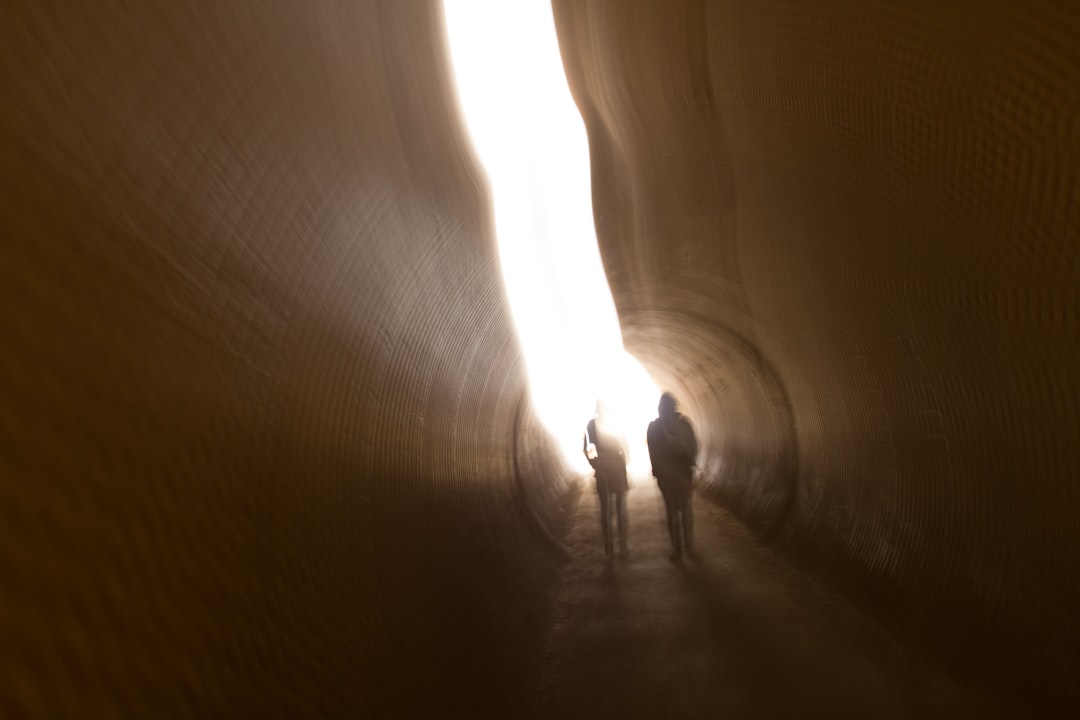The Drake Passage, a body of water that separates South America from Antarctica, is renowned for its tumultuous seas and unpredictable weather. Named after the English explorer Sir Francis Drake, who navigated these waters in the late 16th century, the passage has become a focal point for maritime navigation, scientific research, and ecological studies. Its unique geographical position not only serves as a critical route for vessels traveling between the Atlantic and Pacific Oceans but also plays a significant role in global oceanic currents and climate patterns.
The Drake Passage is often described as one of the most challenging maritime routes in the world, attracting adventurers, researchers, and tourists alike.
” Despite its treacherous reputation, the Drake Passage is a vital corridor for marine life and a key area for understanding the effects of climate change on ocean ecosystems. As such, it holds immense importance not only for those who traverse its waters but also for scientists studying the intricate relationships between ocean currents, weather patterns, and biodiversity.
Key Takeaways
- The Drake Passage is a narrow body of water between South America’s Cape Horn and the South Shetland Islands of Antarctica.
- The Furious Fifties refer to the strong westerly winds and rough seas that characterize the climate and weather patterns in the Drake Passage.
- The area is historically significant for its role in the exploration of Antarctica and the Southern Ocean.
- The Drake Passage is home to diverse wildlife and marine life, including penguins, seals, and various species of whales.
- Crossing the Drake Passage presents challenges and dangers due to its notorious rough seas and unpredictable weather.
Geographic location and significance
Geographically, the Drake Passage lies between Cape Horn at the southern tip of South America and the Antarctic Peninsula. It spans approximately 800 kilometers (500 miles) in width and connects the Atlantic Ocean to the Southern Ocean. This strategic location makes it a crucial passage for maritime traffic, particularly for vessels engaged in research expeditions to Antarctica or those involved in commercial shipping routes.
The passage’s unique positioning also influences oceanic currents, including the Antarctic Circumpolar Current, which encircles Antarctica and plays a significant role in regulating global climate. The significance of the Drake Passage extends beyond navigation; it serves as a natural barrier that separates the temperate waters of South America from the frigid waters of Antarctica. This division creates distinct marine ecosystems on either side, fostering a rich diversity of marine life.
The passage is also a critical area for studying oceanographic phenomena, as it is where warm waters from the Atlantic meet cold waters from the Southern Ocean, leading to complex interactions that impact weather patterns and marine biodiversity.
Climate and weather patterns in the Furious Fifties

The climate of the Drake Passage is notoriously volatile, particularly in an area known as the “Furious Fifties,” which refers to latitudes between 50° and 60° south. This region is characterized by strong westerly winds that can reach gale force, creating rough seas and challenging conditions for navigation. The combination of these fierce winds and the confluence of different ocean currents results in unpredictable weather patterns that can change rapidly.
Mariners often find themselves contending with sudden storms, high waves, and low visibility, making the passage a formidable challenge. The weather in the Furious Fifties is influenced by several factors, including the presence of the Antarctic ice sheet and the surrounding oceanic currents. The cold air masses from Antarctica collide with warmer air from lower latitudes, leading to frequent storms and turbulent seas.
This climatic instability not only poses risks for vessels attempting to cross but also plays a crucial role in shaping the marine ecosystems within the Drake Passage. The nutrient-rich waters resulting from these turbulent conditions support a diverse array of marine life, making it an essential area for ecological research.
Historical significance and exploration of the Drake Passage
| Expedition | Year | Significance |
|---|---|---|
| Francis Drake’s voyage | 1578-1580 | First Englishman to navigate the passage |
| James Cook’s expedition | 1773-1774 | First to cross the Antarctic Circle through the passage |
| Scientific exploration | 20th century | Revealed the importance of the passage for ocean circulation |
The historical significance of the Drake Passage is deeply intertwined with exploration and maritime history. Sir Francis Drake was one of the first Europeans to navigate these waters during his circumnavigation of the globe in the late 1500s. His journey through the passage marked a pivotal moment in maritime exploration, as it opened up new routes for trade and exploration.
Over the centuries, many explorers have followed in his wake, seeking to chart these treacherous waters and uncover the mysteries of Antarctica. In addition to its role in exploration, the Drake Passage has been a site of significant scientific inquiry. The early 20th century saw an increase in expeditions aimed at studying the region’s geography, climate, and wildlife.
Notable figures such as Ernest Shackleton and Robert Falcon Scott undertook perilous journeys through these waters in their quests to reach Antarctica. Their expeditions not only contributed to our understanding of polar regions but also highlighted the challenges faced by explorers navigating the Drake Passage’s unpredictable conditions.
Wildlife and marine life in the area
The Drake Passage is home to an astonishing variety of wildlife and marine life, making it one of the most biodiverse marine environments on Earth. The nutrient-rich waters support an array of species, including krill, which serves as a vital food source for larger animals such as whales, seals, and seabirds. The presence of these organisms creates a complex food web that sustains various marine ecosystems within the passage.
Among the notable inhabitants of the Drake Passage are several species of whales, including humpback whales, orcas, and blue whales. These majestic creatures migrate through the passage during their feeding and breeding seasons, drawing attention from researchers and wildlife enthusiasts alike. Additionally, seabirds such as albatrosses and petrels are commonly seen soaring above the turbulent waters, taking advantage of the strong winds to glide effortlessly while searching for food.
The rich biodiversity of the Drake Passage underscores its ecological importance and highlights the need for ongoing research and conservation efforts.
Challenges and dangers of crossing the Drake Passage

Crossing the Drake Passage presents numerous challenges and dangers that have earned it a fearsome reputation among sailors and adventurers. The unpredictable weather patterns can lead to sudden storms that create towering waves and treacherous conditions. Mariners must be prepared for rapid changes in visibility and sea state, which can make navigation extremely difficult.
Many vessels have encountered mechanical failures or capsized due to the harsh conditions, underscoring the need for caution when traversing this notorious stretch of water. In addition to natural hazards, there are logistical challenges associated with crossing the Drake Passage. The remoteness of the region means that rescue operations can be complicated and time-consuming in case of emergencies.
Sailors must be well-equipped with safety gear and emergency supplies to mitigate risks during their journey. Despite these challenges, many adventurers are drawn to the allure of crossing the Drake Passage, viewing it as a rite of passage that tests their skills and resilience against nature’s formidable forces.
Research and scientific discoveries in the area
The Drake Passage has long been a focal point for scientific research due to its unique geographical features and ecological significance.
The convergence of different ocean currents in the passage provides an ideal setting for studying how these interactions influence global climate patterns.
One significant area of research involves monitoring changes in sea temperature and salinity levels within the Drake Passage. These measurements are crucial for understanding how climate change is affecting polar regions and global ocean circulation. Additionally, scientists have been investigating the effects of melting ice sheets on sea levels and marine ecosystems.
The findings from these studies contribute valuable insights into broader environmental issues facing our planet.
Tourist attractions and activities in the region
Despite its reputation for rough seas, the Drake Passage has become a popular destination for adventurous tourists seeking unique experiences. Many cruise lines offer expeditions that allow travelers to cross this iconic waterway en route to Antarctica. These journeys often include opportunities for wildlife viewing, where passengers can spot whales, seals, and seabirds in their natural habitats.
In addition to wildlife watching, tourists can engage in various activities while exploring the region. Kayaking among icebergs or participating in guided hikes on nearby islands provides an immersive experience that allows visitors to connect with nature. Educational programs led by onboard naturalists enhance travelers’ understanding of the area’s ecology and history, making their journey through the Drake Passage both thrilling and informative.
Conservation efforts and environmental concerns in the Drake Passage
As awareness grows regarding environmental issues facing our planet, conservation efforts in the Drake Passage have gained momentum. The region’s unique ecosystems are vulnerable to threats such as climate change, overfishing, and pollution from maritime traffic. Various organizations are working collaboratively to promote sustainable practices that protect marine life and preserve biodiversity within this fragile environment.
One notable initiative involves establishing marine protected areas (MPAs) within the Drake Passage to safeguard critical habitats for wildlife. These MPAs aim to limit human activities that could harm marine ecosystems while allowing for scientific research and monitoring efforts. Additionally, international agreements such as the Antarctic Treaty System play a crucial role in regulating human activities in Antarctica and its surrounding waters, ensuring that conservation remains a priority.
Economic importance of the Drake Passage
The economic importance of the Drake Passage cannot be overstated. As a vital shipping route connecting major global markets, it facilitates international trade by allowing vessels to transport goods between continents efficiently. The passage is particularly significant for industries involved in fishing and tourism, both of which contribute substantially to local economies.
Commercial fishing operations target species such as krill and various fish populations found within these waters. However, sustainable fishing practices are essential to prevent overexploitation of marine resources. Additionally, tourism has emerged as a key economic driver in recent years, with increasing numbers of travelers seeking adventure experiences in this remote region.
The economic benefits derived from tourism must be balanced with conservation efforts to ensure that future generations can continue to enjoy this remarkable area.
Future outlook and developments in the area
Looking ahead, the future outlook for the Drake Passage is shaped by ongoing environmental changes and increasing human activity in polar regions. Climate change poses significant challenges that could alter oceanic currents, weather patterns, and marine ecosystems within this vital waterway. As temperatures rise globally, researchers anticipate shifts in species distributions and potential impacts on biodiversity.
Moreover, advancements in technology may enhance our ability to study this remote region more effectively. Improved monitoring systems can provide real-time data on ocean conditions while facilitating research efforts aimed at understanding climate change impacts on polar environments. As interest in polar exploration continues to grow among tourists and researchers alike, it will be crucial to prioritize sustainable practices that protect both human interests and ecological integrity within the Drake Passage.
In conclusion, while crossing the Drake Passage presents numerous challenges due to its unpredictable weather patterns and treacherous seas, it remains an area of immense significance both historically and ecologically. As researchers continue to explore its depths and tourists seek adventure amidst its waves, ongoing conservation efforts will be essential to safeguard this remarkable region for future generations.
The Drake Passage, a significant body of water located between the southern tip of South America and Antarctica, is renowned for its challenging navigation conditions and its role in global ocean circulation. For those interested in exploring more about the geographical and historical significance of this region, a related article can be found on MyGeoQuest. This article delves into the intricacies of the Drake Passage and its impact on maritime exploration. You can read more about it by visiting this link.
WATCH NOW! Drake Passage: Earth’s Deadliest Waters Revealed
FAQs
What is the Drake Passage?
The Drake Passage is a body of water located between the southern tip of South America and the northern tip of the Antarctic Peninsula. It connects the southwestern part of the Atlantic Ocean with the southeastern part of the Pacific Ocean.
Why is the Drake Passage called the Drake Passage?
The Drake Passage is named after Sir Francis Drake, the English explorer who is believed to have been the first to navigate these treacherous waters in 1578.
What is the significance of the Drake Passage?
The Drake Passage is known for its notoriously rough and unpredictable seas, making it one of the most challenging maritime routes in the world. It is also an important oceanic gateway for the circulation of water and marine life between the Atlantic and Pacific Oceans.
What is the weather like in the Drake Passage?
The weather in the Drake Passage is characterized by strong winds, high waves, and rapidly changing conditions. It is notorious for its stormy and unpredictable weather, with frequent gale-force winds and rough seas.
What wildlife can be found in the Drake Passage?
The Drake Passage is home to a diverse range of marine life, including whales, seals, penguins, and various seabird species. It is also a popular destination for wildlife enthusiasts and researchers due to its rich biodiversity.
